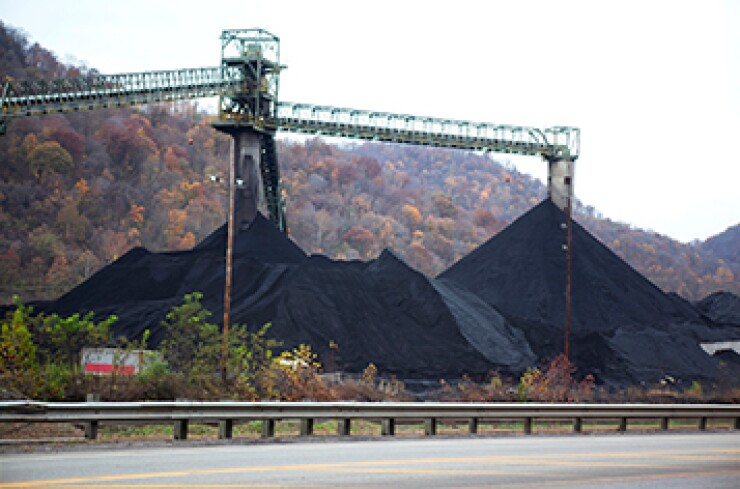The Internal Revenue Service and the Treasury Department released updated guidance Thursday on a provision in the Inflation Reduction Act that aims to spur investment in places that have experienced declines in fossil energy production, especially hard-hit coal-mining towns.
The guidance comes after
"The Inflation Reduction Act is designed not just to lower energy costs and combat climate change, but to promote broad-based economic opportunity and create jobs in communities that have been at the forefront of energy production, especially coal communities," said Deputy Secretary of the Treasury Wally Adeyemo in a statement. "Treasury is focused on ensuring all Americans benefit from the growth of the clean energy economy, particularly those who live in communities that have depended on the energy sector for jobs. Economic growth and productivity are higher when all communities can reach their full potential."
The energy community bonus is available to developers for locating projects in communities that have been historically dependent on fossil energy jobs and tax revenues, including areas with closed coal mines or coal-fired power plants. A census tract where a coal mine closed after 1999, or where a coal-fired electric generating unit was retired after 2009, qualifies as an energy community, as well as directly adjoining census tracts. Sen. Joe Manchin, D-West Virginia, was one of the main negotiators of the Inflation Reduction Act last year with President Biden, and his state has experienced the decades-long downturn in the coal industry firsthand.
The bonus is also available to areas that have significant employment or local tax revenues from fossil fuels and higher than average unemployment. To qualify for the bonus, a metropolitan statistical area or non-metropolitan statistical area must have or have recently had at least 0.17% direct employment, or at least 25% local tax revenues related to the extraction, processing, transport or storage of coal, oil or natural gas, as well as an unemployment rate at or above the national average unemployment rate for the previous year.
In addition, the bonus is available to developers for locating projects on so-called "brownfield sites." A brownfield site is defined as real property, the expansion, redevelopment or reuse of which can be complicated by the presence (or potential presence) of a hazardous substance, pollutant or contaminant, and includes certain mine-scarred land.
The IRS and the Treasury Department have been rolling out guidance on the Inflation Reduction Act since last year. On Wednesday, the IRS issued guidance regarding elective payments and transfers of some tax credits from the law, as well as on the advanced manufacturing investment credit (

Last month, for example, the Treasury and the IRS issued
"Both of them are big deals," said Chad Resner, a director within Baker Tilly's specialty tax team in the credits and incentives practice. "We've seen a lot of client interaction with them, especially the 48C, the advanced manufacturing one, based on just the size. What you're really talking about is producing renewable energy products. You're talking about large projects, so when you get 30% of a large project, it's a big number, and it's a large credit. It's a big investment on behalf of taxpayers. It means a lot to a lot of people. There's a lot of interest in it, and a lot of people looking into it. For the low-income community, that credit can make a big difference in a project because it can be an additional 10 to 20% eligible percentage on top of the credit percentage that you're getting in otherwise, so it really changes the economics of a deal and whether or not they do renewable energy."
His firm works with a number of Native American tribes as clients, and they are among the low-income communities that are interested in the credit. "It could definitely increase the amount of renewable energy on tribal lands," said Resner.
The tax credits can supplement earlier ones already provided under the law, offering extra incentives for renewable energy projects. "Some of these areas are bonus credits on top of base credits," said Michelle Abel, a principal and firm leader of credits and incentives within Baker Tilly's specialty tax practice. "That really makes it something exciting for our taxpayers and our practitioners, because of the way this has enhanced and expanded what we had previously under the investment tax credit and the production tax credit."





